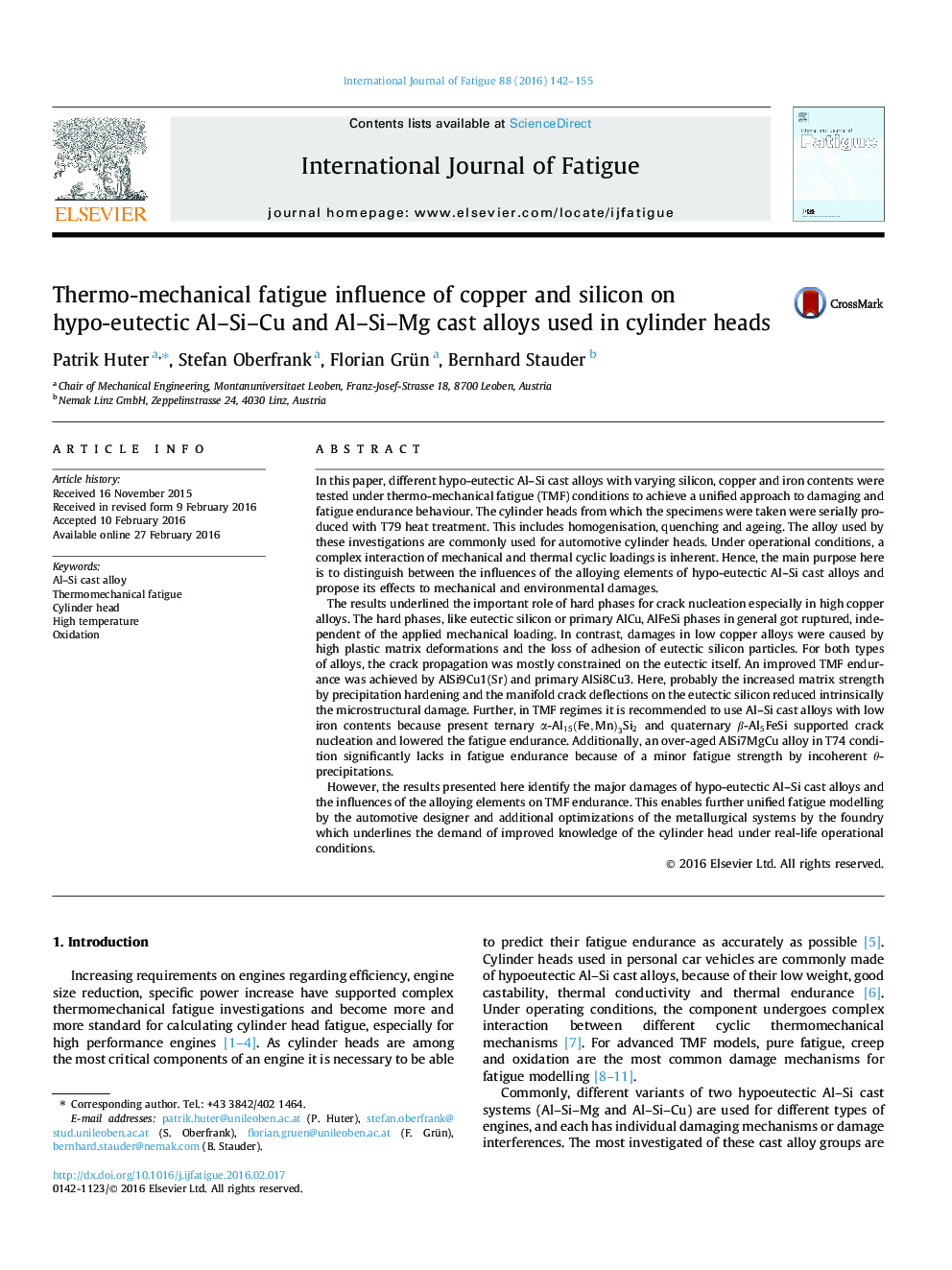| کد مقاله | کد نشریه | سال انتشار | مقاله انگلیسی | نسخه تمام متن |
|---|---|---|---|---|
| 777529 | 1463741 | 2016 | 14 صفحه PDF | دانلود رایگان |

• Correlation of thermomechanical fatigue endurance and damage mechanisms.
• Comprehensive thermo mechanical fatigue testing of 8 Al–Si cast alloys.
• Identification of characteristic fatigue mechanisms and behaviours.
• Observation of special damage mechanisms by refinement and iron impurity.
• Identification of high temperature oxidation under thermo mechanical fatigue.
In this paper, different hypo-eutectic Al–Si cast alloys with varying silicon, copper and iron contents were tested under thermo-mechanical fatigue (TMF) conditions to achieve a unified approach to damaging and fatigue endurance behaviour. The cylinder heads from which the specimens were taken were serially produced with T79 heat treatment. This includes homogenisation, quenching and ageing. The alloy used by these investigations are commonly used for automotive cylinder heads. Under operational conditions, a complex interaction of mechanical and thermal cyclic loadings is inherent. Hence, the main purpose here is to distinguish between the influences of the alloying elements of hypo-eutectic Al–Si cast alloys and propose its effects to mechanical and environmental damages.The results underlined the important role of hard phases for crack nucleation especially in high copper alloys. The hard phases, like eutectic silicon or primary AlCu, AlFeSi phases in general got ruptured, independent of the applied mechanical loading. In contrast, damages in low copper alloys were caused by high plastic matrix deformations and the loss of adhesion of eutectic silicon particles. For both types of alloys, the crack propagation was mostly constrained on the eutectic itself. An improved TMF endurance was achieved by AlSi9Cu1(Sr) and primary AlSi8Cu3. Here, probably the increased matrix strength by precipitation hardening and the manifold crack deflections on the eutectic silicon reduced intrinsically the microstructural damage. Further, in TMF regimes it is recommended to use Al–Si cast alloys with low iron contents because present ternary α -Al15(Fe,Mn)3Si2Al15(Fe,Mn)3Si2 and quaternary β -Al5FeSiAl5FeSi supported crack nucleation and lowered the fatigue endurance. Additionally, an over-aged AlSi7MgCu alloy in T74 condition significantly lacks in fatigue endurance because of a minor fatigue strength by incoherent θ-precipitations.However, the results presented here identify the major damages of hypo-eutectic Al–Si cast alloys and the influences of the alloying elements on TMF endurance. This enables further unified fatigue modelling by the automotive designer and additional optimizations of the metallurgical systems by the foundry which underlines the demand of improved knowledge of the cylinder head under real-life operational conditions.
Journal: International Journal of Fatigue - Volume 88, July 2016, Pages 142–155